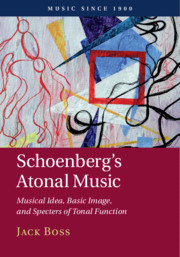Book contents
- Schoenberg’s Atonal Music
- Music Since 1900
- Schoenberg’s Atonal Music
- Copyright page
- Dedication
- Contents
- Music Examples
- Acknowledgments
- Abbreviations and Notational Conventions
- 1 Tonal oder Atonal?
- 2 Piano Pieces Op. 11, Nos. 2 and 3
- 3 Das Buch der hängenden Gärten, Op. 15, Nos. 7 and 11
- 4 Erwartung, Op. 17
- 5 Six Little Piano Pieces, Op. 19 (Nos. 2, 3, and 6)
- 6 Pierrot lunaire, Op. 21, Nos. 1, 14, and 21
- 7 Summary, and the Way Forward to Twelve-Tone Music
- Bibliography
- Index
- By the same author
- References
Bibliography
Published online by Cambridge University Press: 28 June 2019
- Schoenberg’s Atonal Music
- Music Since 1900
- Schoenberg’s Atonal Music
- Copyright page
- Dedication
- Contents
- Music Examples
- Acknowledgments
- Abbreviations and Notational Conventions
- 1 Tonal oder Atonal?
- 2 Piano Pieces Op. 11, Nos. 2 and 3
- 3 Das Buch der hängenden Gärten, Op. 15, Nos. 7 and 11
- 4 Erwartung, Op. 17
- 5 Six Little Piano Pieces, Op. 19 (Nos. 2, 3, and 6)
- 6 Pierrot lunaire, Op. 21, Nos. 1, 14, and 21
- 7 Summary, and the Way Forward to Twelve-Tone Music
- Bibliography
- Index
- By the same author
- References
- Type
- Chapter
- Information
- Schoenberg's Atonal MusicMusical Idea, Basic Image, and Specters of Tonal Function, pp. 366 - 372Publisher: Cambridge University PressPrint publication year: 2019



